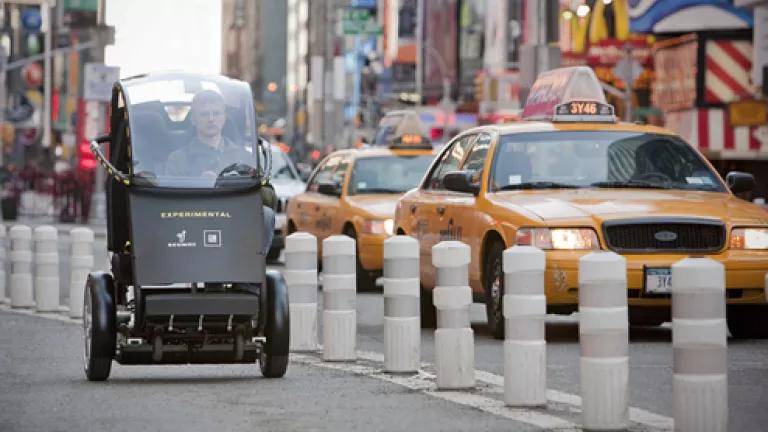
If the GM/Segway P.U.M.A. (Personal Urban Mobility and Accessibility) vehicle were zipping around my neighborhood right now, I would expect to see it in the bicycle lane on 6th Avenue. The experimental two-seat electric vehicle isn't ready to join cars and trucks on the roads of today, but with proper urban planning, we could open the roads to new modes of personal mobility and dramatically cut oil use and global warming pollution.
From my office in New York City, I can see just a slice of 6th Ave but it is enough to catch the multitude of different road users navigating traffic. Occasionally, I cringe as I see a cyclist swerve out of the bike lane into the crowded street to get around a delivery truck pulling up to the curb. Pedicabs drivers, piloting their 3-wheeled taxi bikes, join the fray to bring business folks and tourists to their next appointments.
A clean energy city of the future would also be full of ways for people to travel (faster than their feet will carry them). Public transit buses and rail, bicycles, pedicabs, Segways, and cars powered by electricity and/or sustainable biofuels could all be part of the mix. The modes, however, travel at different speeds and come in different sizes and shapes, so having roads with safe and efficient routes for all users is key.
Congress should give regional and city planners an incentive to plan cities in ways that maximize clean energy and carbon reductions. As I mentioned here, the draft legislation introduced last week by Congressmen Waxman and Markey includes a provision to reset the way we plan our cities, focusing more on low-carbon community development and alternatives to driving. It all starts with setting carbon reduction goals; then, with a target to achieve, regions execute their development plans while leveraging intelligent transportation information technology and clean vehicle technology (human-powered as well as motorized) to provide safe, convenient, low-cost and low-carbon mobility. Regions can choose how to meet their targets, but federal funding for their efforts should be tied to their success in meeting carbon reduction targets.
Along with the climate bill, the upcoming federal transportation bill offers another opportunity to get the planning (and distribution of funds) right.
Who knows, with proper planning, quiet Segways and bikes may become the transportation mode of choice in cities.
------------
Note: Photo from Segway link above.

